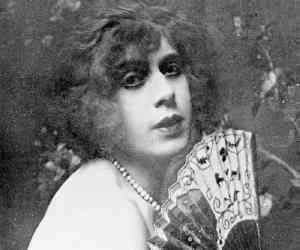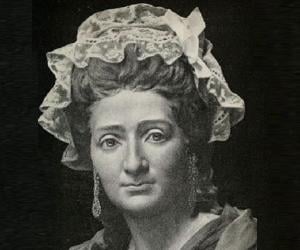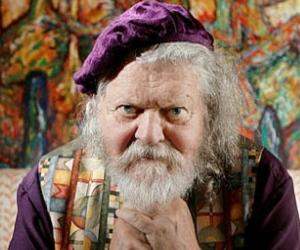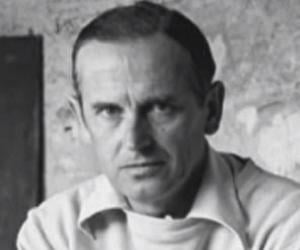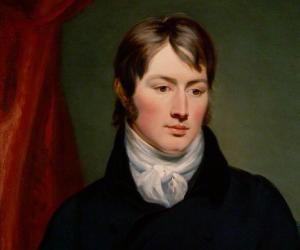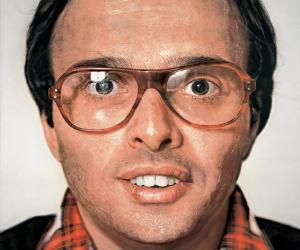Childhood & Early Life
Lili Elbe was born on 28 December 1882 in a small fjord-side town of Vejle, Denmark. He was raised as a male child with the name Einar Magnus Andreas Wegener. According to some reports, he may have been born as an intersex child but there is no absolute proof.
Wegener was a student at the Royal Danish Academy of Fine Arts in Copenhagen, Denmark.
Later Years
Having graduated from the Royal Danish Academy of Fine Arts, both Wegener and his wife Gerda Gottlieb worked in the same field. While Wegener was an expert in landscape paintings, his wife sketched for books and fashion magazines.
Wegener’s transition to being a woman began accidentally. One day, he dressed up as a woman when Gottlieb’s model didn’t turn up. He was required to wear stockings and heels to appear more akin to the model. Strangely, he didn’t feel awkward in the dress. Soon, it became the norm and he increasingly began dressing and identifying as a woman.
This transition proved to be beneficial for the couple. Gottlieb’s paintings of her husband in the disguise of a beautiful woman became quite famous. Until 1913, people remained unaware that the subject of the paintings was actually a male person none other than Gottlieb’s spouse.
By the 1920s, Wegener had almost transformed his personality, attending public events with his wife in the characteristic traits of a woman. He was introduced to others as Lili Elbe, Einar Wegener’s sister. No one else other than his wife and closest friends knew who Lili Elbe actually was.
Around that time, Elbe came to know about an option to biologically transform her body. The procedure, though at an experimental stage, was possible at the German Institute for Sexual Science, Berlin, founded by Dr. Magnus Hirschfeld.
By 1930, Elbe was determined to undergo surgery in order to become a complete woman. Although sex reassignment surgery was still at a trial stage at that moment, he decided to take the risk. He visited Germany for the purpose and over the next two years, four surgeries were performed.
In the first surgery, Dr. Magnus Hirschfeld removed Wegener’s testicles. The next three surgeries involving the placing of an ovary in the abdomen, removing the penis and the scrotum, and lastly transplanting a uterus and creating a vaginal canal were done by Dr. Kurt Warnekros at the Dresden Municipal Women’s Clinic.
Meanwhile, Elbe managed to make her gender transition legal. She even received a passport in her new name, Lili Ilse Elvenes.
Further, to make the transition complete and to let go of her previous identity, Lili Elbe stopped painting altogether. Before the fourth and final surgery, she got officially separated from Gottlieb as she was no longer the man Gottlieb had married.
Personal Life & Legacy
While a student at the Royal Danish Academy of Fine Arts, Wegener met his future wife Gerda Gottlieb, a fellow student and budding painter. The couple fell in love and got married in 1904, when Gottlieb was 19 and Wegener was 22.
After having travelled far and wide together, in 1912 the couple decided to settle in Paris. The open culture of the city offered Wegener the much desired opportunity to live explicitly as a woman, and his wife as a lesbian.
In the form of a woman, Elbe got involved in a romantic relationship with Claude Lejeune, a French art dealer. She longed to marry and have a family with him. She hoped that her last surgery involving a uterus transplant would make her dream of bearing children true.
In June 1931, it was time for the much awaited final surgery – the transplant of a uterus and the construction of a birth canal. Both these procedures were still at a nascent stage. Post-surgery, she developed an infection and within three months died of cardiac arrest on 13 September 1931.
Every year, ‘MIX Copenhagen’ – the LGBT film festival bestows four ‘Lili’ awards in her honor.
Ernst Ludwig Harthern-Jacobson (under the pen name of Niels Hoyer) collected information about Elbe’s life from her personal diaries and published the book, ‘Man into Woman’ in 1933. It is one of the earliest inspirational books about a transgender person’s life.
David Ebershoff authored the international bestseller, ‘The Danish Girl’ in the year 2000. It was a fictionalized description of Lili Elbe’s life. The book was made into a critically acclaimed film of the same name in 2015.
Facts About Lili Elbe
Lili Elbe was a talented landscape painter before transitioning, with her works being exhibited in galleries across Denmark.
Lili Elbe was one of the first known recipients of gender confirmation surgery, undergoing a series of groundbreaking procedures in the early 1930s.
Lili Elbe’s courage and openness about her journey as a transgender woman helped pave the way for greater acceptance and understanding of gender identity.
Lili Elbe’s life and experiences were portrayed in the critically acclaimed film “The Danish Girl,” bringing her story to a wider audience and sparking important conversations about transgender rights.
Lili Elbe’s legacy continues to inspire individuals around the world to embrace their true selves and advocate for inclusivity and equality.


